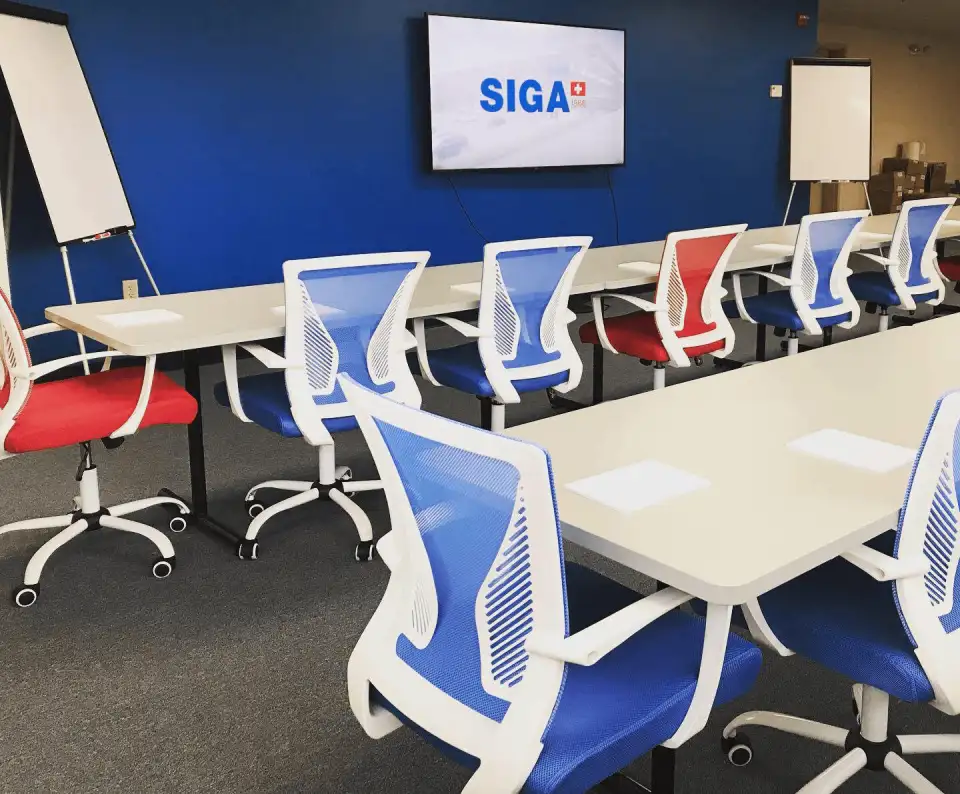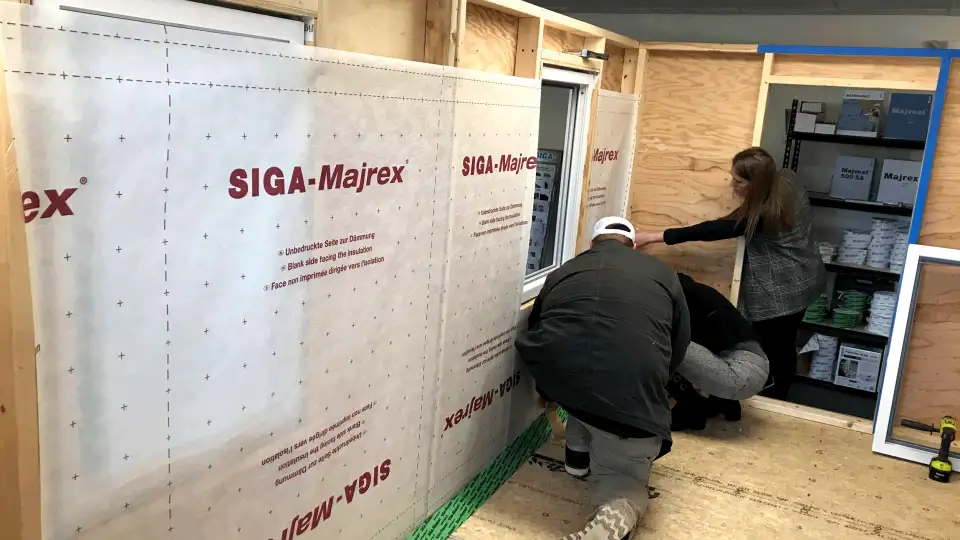
I recently caught up with Ken Kiefer, High-Performance Construction Academy Director at SIGA North America (a Champion Sponsor of Passive House Accelerator), to speak with him about the training facility that SIGA opened recently in New Hampshire. Please enjoy this account of the interview, edited lightly for length and clarity. Ken shares about how SIGA’s mission is aligned with Passive House design and construction, the importance of a trained high-performance construction workforce, and his and SIGA’s work to help make that workforce a reality.
Zack Semke:
Ken, thank you for joining me here for this interview. I’m really looking forward to hearing more about your work with SIGA’s High-Performance Construction Academy in New Hampshire. Can we start by having you introduce yourself and the work you do at SIGA?
Ken Kiefer:
Great, absolutely. My name is Ken Kiefer, and I work directly for SIGA as both the manufacturers' representative and the director of our High-Performance Construction Academy in New England, so I wear a few hats for the company. Not only do I do the training at the center, but also field training on-site, detail reviews, consulting for which products go where, and how to use our products. So, I do a little bit of everything for SIGA.
Zack:
Absolutely. Can you take a moment to talk about SIGA's mission and why SIGA cares about Passive House? SIGA has been a part of the Passive House community since the beginning. Why is that?
Ken:
SIGA's a privately owned company and the two brothers who own the company hold very near and dear to the heart their mission, which is a world of zero energy loss buildings. We understand that one of the biggest parts of zero energy loss building is maintaining an airtight building envelope, so we really strive to align ourselves with like-minded organizations who are looking to do better for the building industry—not just from an energy savings standpoint, but from a building durability standpoint. We really work to do the best that we can, both from a product development standpoint, but also a help standpoint. When you're working with SIGA, we don't just say hey, “Here's a great product. Go figure it out.” We want to be with you every step of the way to make sure that your goals are met because those are our goals as well.
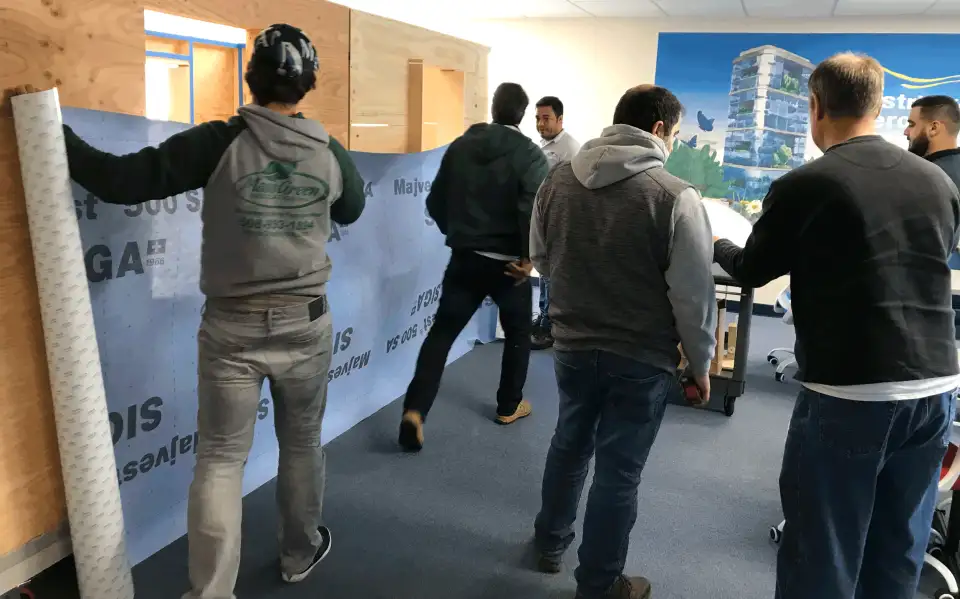
Zack:
Tied to that ethos of help is a commitment to training. Why don't we talk about the SIGA High-Performance Construction Academy in New Hampshire? If you could share with us what that Academy is, what the facility is like, what programming you're doing, and why do you see training as so important to this industry?
Ken:
High-performance construction is new to a lot of people. It's not wildly different [than conventional building methods], but there are enough differences in high-performance construction that you need to have access to information to be able to be successful. We want high-performance construction to be as easy as possible because we think that that's really the best way to get people on board with it, to say, “All right, look, you can do this.” It's not like you're setting a goal that you can't reach. We want to provide an experience where people understand, “Hey, this isn't as hard as I thought it was going to be. I think I can really do this.”
Training is really fundamental to the success of all these projects and, if these projects are successful, that really helps elevate the whole high-performance building industry. It shows we have a group of people that can do this, that more and more people are able to do it, and that helps to really push the industry forward because more people will want to do it.
The facility is only about 30 minutes north of Boston. When people hear “New Hampshire,” they think the Academy is out in the middle of nowhere, but it's extremely accessible.
At the Academy, we start by talking about the science and the how and the why. We have some experiential experiments that we do with students to show the value of airtightness and the thermal capacity of the envelope. Once we get done with the theory section of the training, we then put it all into physical practice via two seven-foot mock-up cubes. So, builders, architects, engineers, consultants, even realtors and homeowners, can come through to try and get a better hands-on understanding of this industry and of the practices involved in it. It’s a real tactile experience. As far as we're concerned, that's the best way to learn—putting your ideas and your thoughts into actual practice. We think it’s extremely valuable in really connecting the dots for getting these things done well.
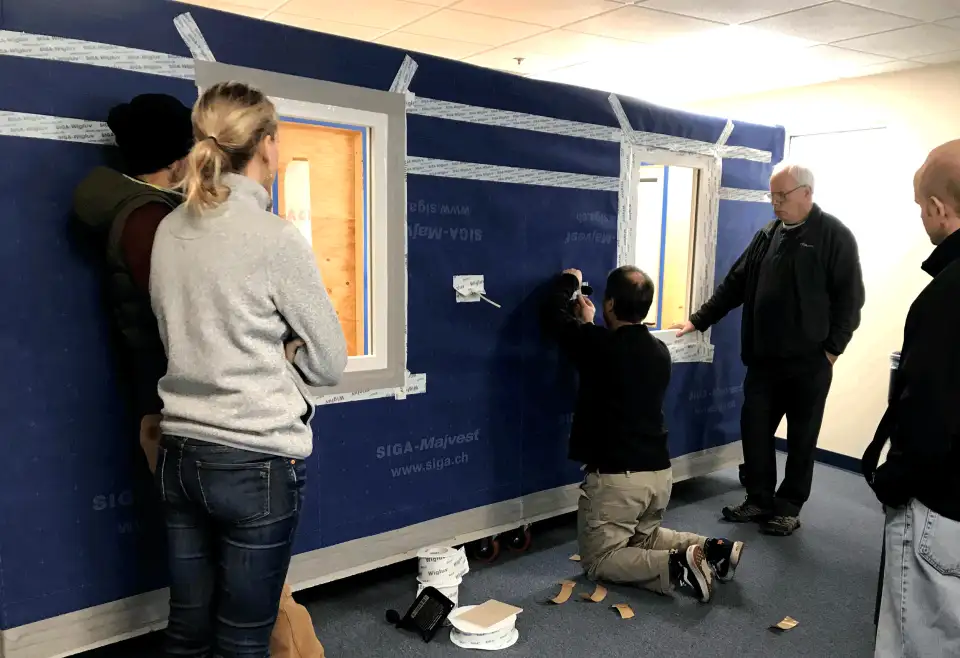
Zack:
I’ve experienced firsthand the SIGA way of training, because I got to go to one of your global airtightness trainings in Ruswil, Switzerland. It was right before the International Passive House Conference in Munich in 2018. You had a series of cube mock-ups where we were learning how to apply membranes and figure out how to use the tape. I'm not a builder, so it was all extremely new to me, but that hands-on, tactile experience is really powerful. You guys really do a good job. There's a really great curriculum that you've developed and some really fun experiments that drive home basic concepts of building science in an experiential, visceral way. My guess is that you're taking that same thinking from the center there in Ruswil and bringing it to the center in New Hampshire, right?
Ken:
Right, yeah. The foundational components of all those trainings are very similar. Obviously, the construction practices from Switzerland aren't standard here, so we do have to adapt our curriculum a little bit to help bring it into whatever market it is that we're in. We have the center in New Hampshire, which pretty much covers most common building practices in the United States. It's a little different when you get down to, like, the southern tip of Florida and things change a little bit. We also have another one in Vancouver, British Columbia, that fundamentally is very similar.
Zack:
How do people access the Academy? How do people learn about opportunities to have this tactile experience?
Ken:
We try to have public events at least once a month now that it's safer to get back to these types of in-person events. If there's a company that wants to send seven or eight of its people and they're not available for a public event, we can do a private event for that company. It's all on our website, SIGA.swiss. There's a training header at the top that shows our calendar of events for the High-Performance Construction Academy. We really put the word out there, but there’s also lots of word of mouth. Once somebody goes through the training, they tend to talk about it a lot and tell their friends. We obviously talk to folks like you to really push the importance of what it is that we're doing out there, and how to get hold of us. People can also just reach out directly to me to connect with a training.
Zack:
Nice. The Academy, I would imagine, can also be a resource for the broader community. Are there other ways, like other partnerships that you're looking at in terms of leveraging this resource for others in the community? What sort of ancillary or other ways do you see the Academy being used?
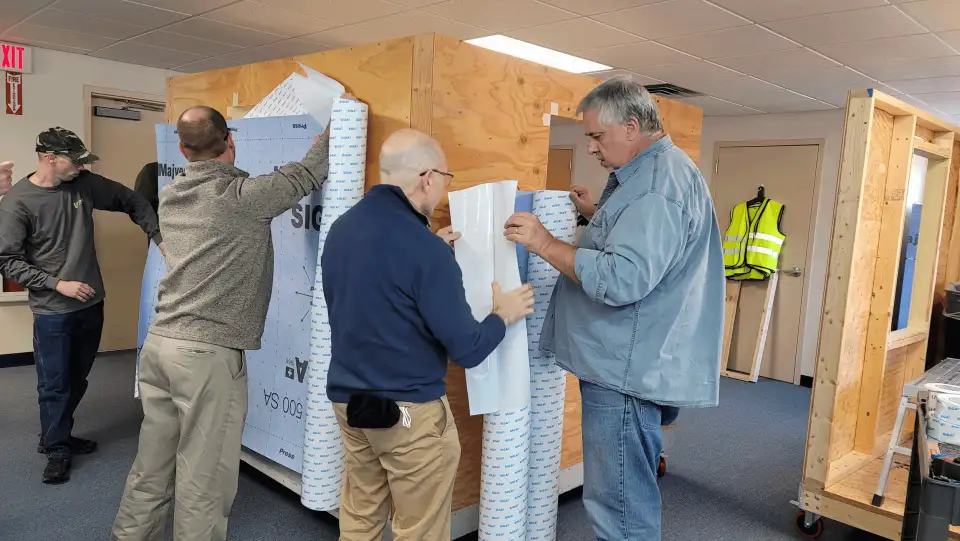
Ken:
Right, we're in talks with other companies as well within the industry—insulation companies like Rockwool and ventilation companies like Zehnder—because we do offer that facility to our cooperative partners in the industry. We offer the facility as free to use, so if they want to host their own trainings, we can do that.
We're also talking to different design schools—construction schools, trade schools—so they can have events at the Academy as well. Of course, there's just an almost endless possibility of having BS and Beer events, the Home Builders Association events, and networking events. There are a lot of opportunities for that facility to be used by the community at large, as long as it aligns with our ethos of better construction practices.
Zack:
Nice. I can't wait to see it myself when the time is right. I'm in Seattle, so it's a bit of a trek, but a shorter trip than going back to Switzerland! Is there anything else you'd like to add before we close up?
Ken:
I think it's important for builders to understand that it's not that they were doing something wrong or that something that they learned is an inappropriate building practice. We're really just trying to help builders stay at the forefront of (a) our constantly evolving understanding of building science and (b) the cutting edge of construction quality. That’s one of the things that builders don't have a lot of access to, just that level of training.
From my experience, especially as someone who enjoys building, I'm a much more hands-on learner than I am someone who can sit in front of a computer screen watching a video or looking at a PowerPoint presentation. Being able to focus your energies is really important. Taking four hours out of your day to come up to a training center [can seem like a lot]. I understand there are a lot of things going on in the building industry right now, but those four hours can save you dozens, if not hundreds of hours in rework later on. I think they're four hours very well spent. Codes are finally getting more strict, so there's a lot of opportunity to make sure that builders don't kind of fall behind. We're happy to be a part of that and offer that as a free service to the construction community at large.
Zack:
Well said, and great work. Thank you, Ken. Really appreciate it.
Ken:
Absolutely. It's great to be talking to you today.
